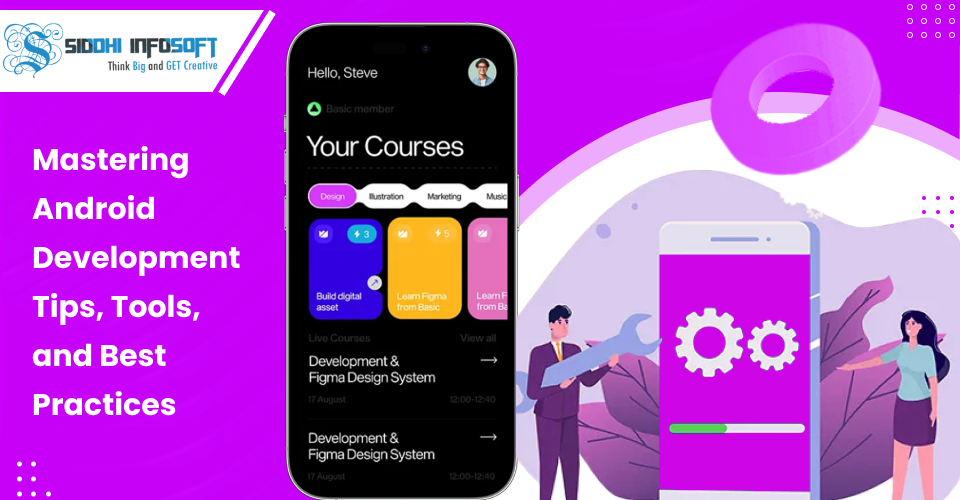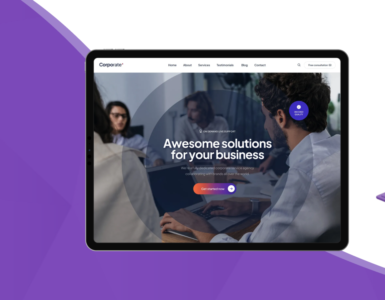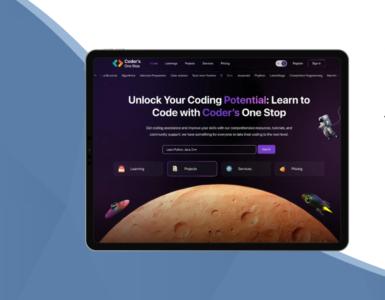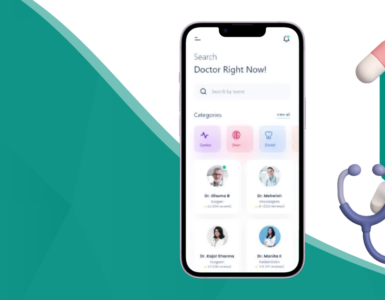The mobile app market is more saturated than ever—with millions of apps vying for user attention. Yet, opportunities still exist for brands to shine. The key? Deliver a mobile experience that’s not just functional but delightful. A modern app with an intuitive UI and seamless UX can easily outshine competitors offering clunky, outdated interfaces.
When we talk about mobile app development, it’s no longer just about writing lines of code. While coding remains integral, success lies in a well-thought-out design strategy centered on the user. A clear, purpose-driven design process is essential in building an app that people love using.

Creating a Strategic Roadmap for App Design
Before jumping into code or UI mockups, it’s crucial to break down the app development journey into distinct phases. Designers and developers call this a mobile app design roadmap—a visual blueprint that outlines every task from concept to deployment.
A good roadmap ensures clarity, accountability, and collaboration among teams. It connects all design and development components, from backend integrations and payment gateways to data security and ongoing maintenance. Network reliability, API design, and SLA performance metrics must also be mapped clearly from day one.
Clutter-Free UX: Less is More
Modern users expect apps to be fast, intuitive, and visually clean. If your app interface feels cluttered or confusing, users will quickly abandon it. Minimalist design principles dominate successful apps. Remove redundant elements, avoid unnecessary animations, and focus on delivering core functionality efficiently.
Speed is key. A laggy app is a deal-breaker. Remember—today’s users have an attention span shorter than ever. If an app doesn’t load or function smoothly, they won’t think twice before uninstalling it.
Frictionless Onboarding Experience
Yes, personalization boosts retention—but don’t make users jump through hoops to register. Soft onboarding where users can explore the app’s features without mandatory signups.
Let users see your app’s value first. Then, you can request minimal, necessary details like an email or phone number. Include a “Skip” button on the registration screen and explain the benefits of signing up in a polite, persuasive tone instead of demanding information upfront.
Typing Fatigue is Real: Keep Input Minimal
While large smartphone screens make browsing easier, typing is still inconvenient for many. Hence, reduce manual input as much as possible. Use drop-down menus, autofill fields, predictive text, and voice inputs where applicable.
Keep forms short. A lengthy digital form will discourage engagement. Use progress indicators and validation prompts to make form filling feel more natural and less taxing.
Visual Storytelling: More Graphics, Less Text
Think visually. Today’s mobile users prefer content they can consume quickly. So, instead of long explanations or heavy text blocks, use icons, infographics, and short visuals to convey your message.
Apps are embracing micro animations, interactive illustrations, and gesture-based navigation to create immersive user journeys. However, always balance creativity with clarity. Avoid overly flashy designs that distract instead of guiding.
Consistency Between App and Website Interface
If your business already has a website, it’s vital to maintain brand consistency across platforms. Don’t confuse users by changing the app’s color palette, typography, or terminologies.
Your mobile app UI should feel like a natural extension of your brand’s web presence. This uniformity builds trust and provides users with a seamless multi-channel experience. In fact, many companies now opt for Design Systems to maintain a cohesive digital identity across all platforms.
Typography and Color: Simplicity Wins
Artistic fonts may look stylish but are rarely functional on small screens. Stick to modern, legible typefaces like Roboto, San Francisco, or Inter. Keep font sizes at a minimum of 11pt, and use ample line spacing to improve readability.
Color contrast also plays a crucial role. Low contrast or poor color combinations can harm accessibility. Design guidelines increasingly promote inclusive color schemes and dark mode support for better usability across age groups and lighting conditions.
Designing the Perfect App Icon
A standout app icon is essential for visibility in app stores. Whether you’re launching on the Apple App Store or Google Play, ensure your icon fits the platform’s design standards—especially now that icon shape customization and adaptive icon formats are more popular.
Use a simple, memorable visual, and avoid cramming in text. Make sure it renders perfectly on different screen sizes and backgrounds.
In-App Search: A Must-Have
In search functionality is more important than ever. With AI-powered content and expanding app features, users expect smart search capabilities. A visible and accessible search bar, preferably with autocomplete and filters, can help users find what they need faster.
Make sure your search indexing is optimized to return relevant, personalized results based on user behavior.
High-Quality, Scalable Images
Crisp visuals are a hallmark of quality design. Use high-resolution images that maintain clarity even when zoomed. Blurry or stretched graphics reflect poorly on your brand.
Maintain proper aspect ratios to avoid image distortion across devices. Responsive image design is critical, as users now use screens ranging from 4-inch phones to 12-inch tablets.
Tools like WebP, AVIF, and lazy loading also help optimize image performance without slowing down your app.
Thumb-Friendly Buttons: Easy and Accessible
Small, cluttered buttons are a UX disaster. App designers follow “thumb zone” mapping to ensure that buttons are comfortably accessible for one-handed use.
Keep button size between 44px–48px, space them out properly, and use contrasting colors for primary CTAs (Call-To-Actions). Buttons must also be visually and functionally distinct across states—default, hover, pressed, and disabled.
Testing for Real-World Conditions
Even the best-designed app fails without rigorous testing. QA teams now use real device cloud testing, AI-driven bug detection, and accessibility audits to refine mobile apps.
Run usability testing with real users. Validate your app for:
- Functionality – Does everything work as expected?
- Memory Usage – Is the app lightweight and stable?
- Security – Is user data encrypted and protected?
- Interruption Handling – Can the app recover from calls or offline scenarios?
Collect feedback early and iterate based on real insights. Post-launch testing is equally vital, as usage patterns may differ from expectations.
App Design is a Journey, Not a Destination
Your app will evolve. Trends shift, technology updates, and user needs change. Regular updates keep your app fresh and relevant. Use analytics, A/B testing, and user feedback loops to fine-tune UI/UX over time.
Remember, adaptive and iterative design is the future. Continuous improvement ensures long-term engagement.
Hiring UI/UX Experts: Invest in Design
Mobile UI trends like Material You (Android) and Dynamic Type & Depth (iOS) dominate the landscape. These systems focus on personalization, fluid motion, and layered depth.
Material You allows users to personalize app color themes, while iOS emphasizes minimalist layouts, contextual navigation, and adaptive layouts.
Professional app designers understand these ecosystems deeply and can help create trendy yet timeless designs. Don’t skimp on design talent—it can make or break your app.
Final Thoughts
The landscape of mobile app design is fast-moving and fiercely competitive. But with a strategic approach, user-first thinking, and a pulse on the latest trends, your app can stand out—and stay ahead.
From layout to typography, interactivity to accessibility—every detail matters. So, embrace the trends, simplify the experience, and build an app that users truly love.
























